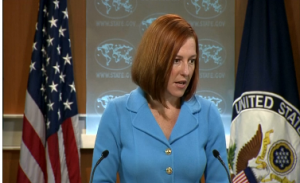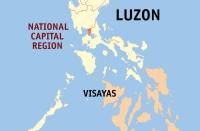
(Reuters) — The U.S. State Department on Tuesday (September 2) condemned the apparent beheading of U.S. journalist Steven Sotloff after video purporting to show his murder was released online.
“If the video is genuine, we are sickened by this brutal act taking the the life of another innocent American citizen,” said U.S. State Department Spokeswoman Jen Psaki during a daily press briefing.
“Our hearts go out to the Sotloff family and we will provide more information as it becomes available,” Psaki said, adding that the intelligence community will work “as quickly as possible” to authenticate the video.
The Islamic State militant group released a video purporting to show Sotloff’s killing, the SITE monitoring service reported on Tuesday.
A masked figure in the video also issued a threat against a British hostage, a man the group named as David Haines, and warned governments to back off “this evil alliance of Americaagainst the Islamic State”, the monitoring service said.
Sotloff, a freelance journalist, was kidnapped in Syria in August 2013. Sotloff’s mother Shirley appealed on Aug. 27 in a videotaped message to Islamic State’s self-proclaimed caliph, Abu Bakr al-Baghdadi, for her son’s release.
On Aug 19 the group published a video showing the beheading of U.S. hostage James Foley. The group said his death was in retaliation for U.S. airstrikes on fighters in Iraq.
That video was issued after the United States resumed air strikes in Iraq in August for the first time since the end of the U.S. occupation in 2011.







